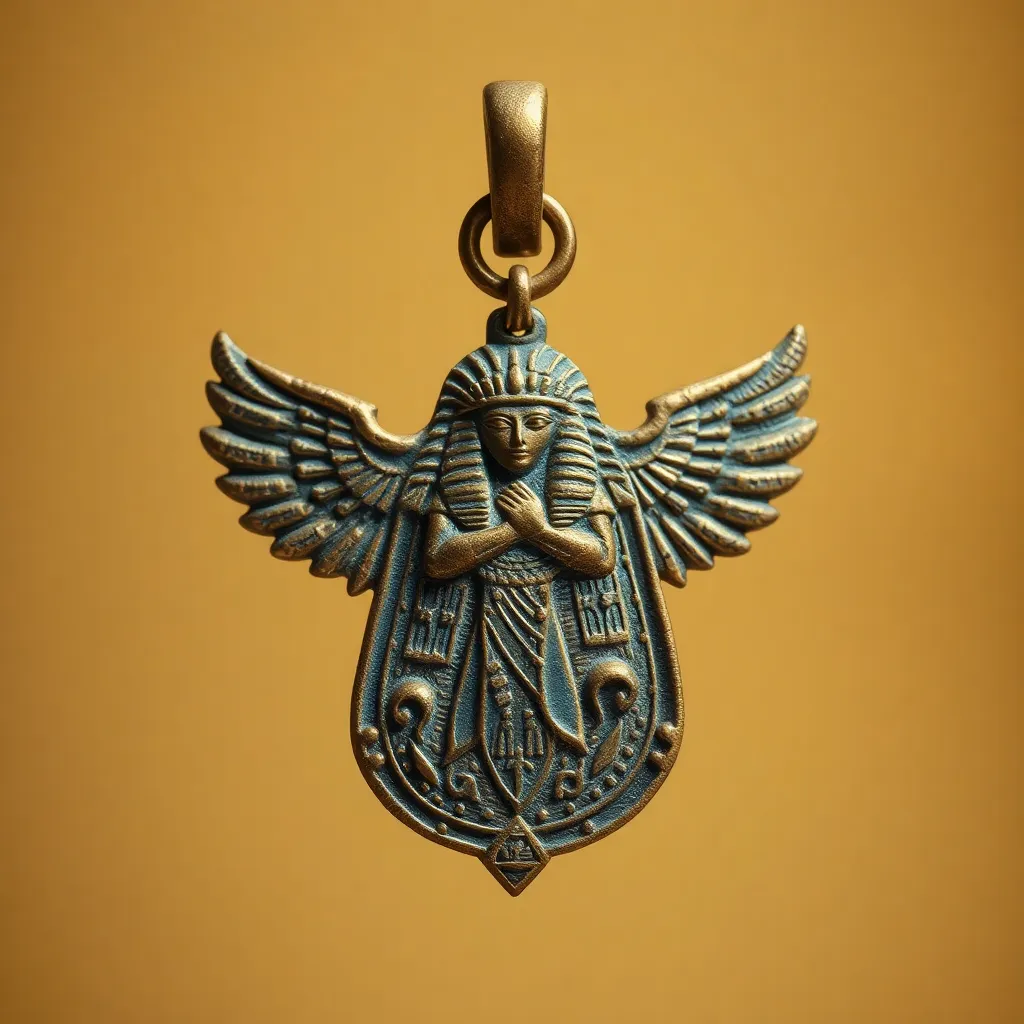Amulets and the Concept of Divine Intervention in Ancient Egypt
I. Introduction
Amulets played a crucial role in ancient Egyptian culture, serving as protective charms imbued with magical properties. These small objects were believed to have the power to ward off evil and attract good fortune. The ancient Egyptians viewed the world as filled with supernatural forces, and they sought the protection and guidance of the divine through various means, including the use of amulets.
This article aims to explore the significance of amulets within the context of divine intervention in ancient Egyptian beliefs, examining their historical evolution, symbolism, and roles in both daily life and the afterlife.
II. Historical Context of Amulets in Ancient Egypt
Amulets have a long history in ancient Egypt, evolving from simple charms in pre-dynastic times to elaborate designs during the later periods.
- Pre-dynastic Period: Early amulets were often made from natural materials such as stones and shells, serving basic protective functions.
- Old Kingdom: The use of amulets expanded greatly, with a variety of shapes and meanings emerging, including protection against specific dangers.
- New Kingdom: Amulets became more intricate, with the introduction of various materials such as faience, gold, and glass.
- Late Period: The tradition continued, with amulets becoming essential components of burial practices.
The importance of amulets in daily life is underscored by their presence in burial practices, where they were placed on or within tombs to ensure the deceased’s protection in the afterlife.
Common materials used in amulet creation included:
- Stone (e.g., lapis lazuli, turquoise)
- Faience (a glazed ceramic material)
- Gold and precious metals
III. The Symbolism of Amulets
Amulets were often inscribed with symbols that held specific meanings, reflecting the beliefs and values of ancient Egyptian society.
- Eye of Horus: Symbolizing protection, royal power, and good health.
- Scarab: Representing rebirth and transformation, associated with the sun god Ra.
- Ankh: The symbol of life and immortality.
The relationship between these symbols and divine protection was fundamental, as individuals believed that wearing or carrying an amulet imbued with these symbols could invoke the favor of the gods. Amulets could be categorized as:
- Protective Amulets: Designed to ward off evil spirits and misfortune.
- Decorative Amulets: Primarily for ornamental purposes, though they often held protective meanings as well.
IV. Divine Intervention in Ancient Egyptian Beliefs
Divine intervention was a cornerstone of ancient Egyptian spirituality, defined as the influence of the gods in the affairs of humans. The Egyptians believed that the gods played active roles in guiding and protecting individuals throughout their lives.
Each god and goddess had specific attributes and areas of influence, providing various forms of protection and guidance:
- Isis: Goddess of motherhood and magic, known for her protective qualities.
- Anubis: God of the afterlife, ensuring safe passage for souls.
- Horus: God of the sky, representing kingship and protection.
Rituals and practices such as prayers, offerings, and the use of amulets were common methods for seeking divine intervention. These practices were believed to create a direct connection between the worshippers and the deities, enhancing their chances of receiving divine assistance.
V. Amulets as Tools for Divine Communication
Amulets served not only as protective charms but also as tools for divine communication. They were integral to various rituals aimed at enhancing spiritual connections.
The belief that amulets could act as mediators between humans and deities led to their use in specific rites. For example:
- Amulets inscribed with prayers or spells were often included in funerary practices to aid the deceased.
- Individuals would wear amulets during rituals to invoke the presence of specific gods.
Case studies of specific amulets, such as the Heart Scarab, highlight their role in facilitating communication with the divine, particularly in the context of the afterlife.
VI. The Role of Amulets in the Afterlife
In ancient Egypt, the afterlife was a significant aspect of existence, and amulets were vital in ensuring safe passage and protection for the deceased. During funerary practices, various amulets were placed with the body or in tombs as offerings.
The significance of amulets in the afterlife can be seen in the following ways:
- Amulets were believed to protect the deceased from malevolent forces in the underworld.
- They served to assist in the judgment process, ensuring the soul’s acceptance into the afterlife.
Notable examples of amulets found in archaeological sites, such as the tomb of Tutankhamun, illustrate the importance placed on these artifacts in securing a successful afterlife.
VII. Comparative Analysis: Amulets in Other Ancient Cultures
While amulets were deeply rooted in ancient Egyptian culture, they also appeared in neighboring civilizations, each with unique characteristics.
- Mesopotamia: Amulets often depicted gods and were used for protection against evil spirits.
- Greece: Greeks used amulets known as apotropaic to avert misfortune, often inscribed with protective spells.
Similarities in the concept of divine intervention can be observed across these cultures, although differences in practices and beliefs highlight the unique aspects of each civilization. The influence of ancient Egyptian practices can also be seen in later cultures, particularly in the use of symbols and the belief in protective charms.
VIII. Conclusion
In summary, amulets held a significant place in ancient Egyptian culture, serving as tools for divine protection and communication. Their historical evolution reflects the changing beliefs and practices surrounding the afterlife and the divine.
The lasting impact of these beliefs can be seen in modern contexts, where the symbolism of ancient amulets continues to resonate. Further research into ancient practices and their significance can provide valuable insights into the spiritual lives of the ancient Egyptians and their understanding of the divine.




